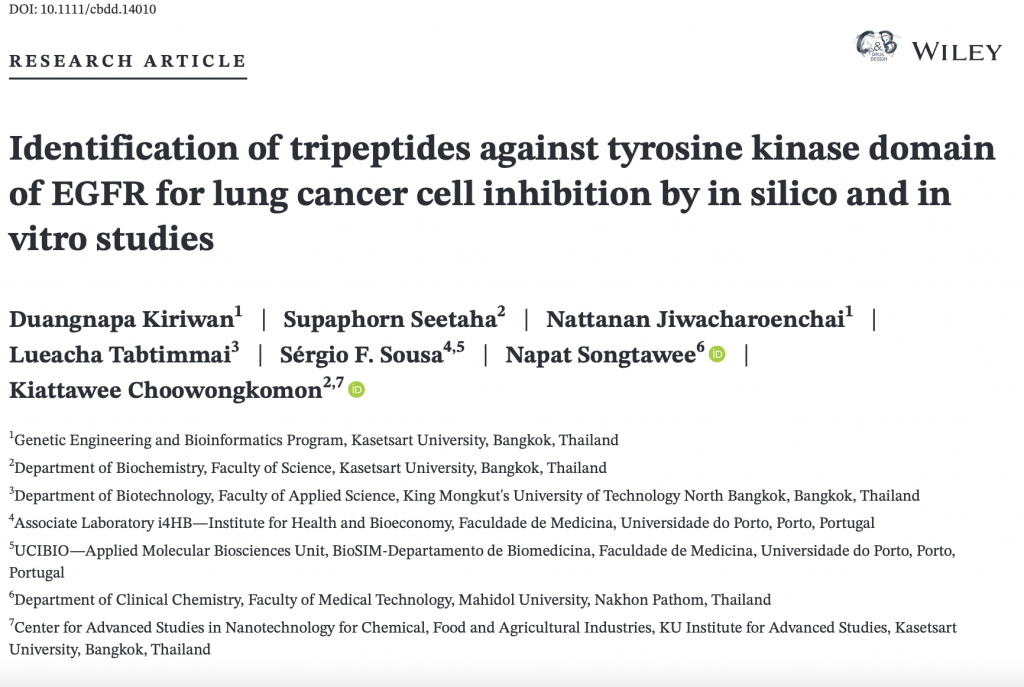Please check our recent publication in Chemical Biology and Drug Design (IF 2.817), a collaboration with Professor Kiattawee Choowongkomon’s lab at Kasetsart University, Bangkok, Thailand.
Identification of tripeptides against tyrosine kinase domain of EGFR for lung cancer cell inhibition by in silico and in vitro studies
Kiriwan D., Seetaha S., Jiwacharoenchai N., Tabtimmai L., Sousa S.F., Songtawee N., and Choowongkomon K.
Chemical Biology and Drug Design (2021)
DOI: 10.1111/cbdd.14010

Epidermal growth factor receptor tyrosine kinase domain (EGFR-TK) has been one of the prominent targets for therapeutics of several human cancers, in particular non-small cell lung cancer. Although several small chemical compounds targeting EGFR-TK have been approved by FDA for treatment of such a cancer, the discovery of a new class of EGFR-TK inhibitors, for example, small peptides, is still desired. In this study, using molecular docking-based virtual screening, we selected five small peptides with high docking scores from eight thousand peptides as candidate compounds against EGFR-TK. Among five, the tripeptide WFF had the most potency to suppress the survival of non-small cell lung cancer cells but had the least toxicity to human liver cancer cells. Our in vitro kinase assays showed that WFF exhibited much lower inhibitory activity against purified EGFR-TK than the drug erlotinib (i.e., IC50 values of ≈ 0.62 μM vs ≈ 7.57 nM, respectively). The relative free binding energies estimated from molecular dynamic simulations were consistent with the in vitro experiments in which the WFF bound had a lower affinity than erlotinib bound to EGFR-TK (i.e., ΔGbind values of −20.3 kJ/mol vs ≈ −126.8 kJ/mol, respectively). In addition, the simulation analyses demonstrated the difference in EGFR binding preference between the drug and tripeptide in which erlotinib was stably bound in the ATP-binding pocket for 4-anilinoquinazoline class of inhibitors, while WFF moved out of that pocket to interact with polar amino acid residues on the αC-helix, activation loop, and substrate-binding region. Our findings suggest preferable interactions of the potential tripeptide on enzyme inhibition that are useful for further development of a new class of inhibitors targeting EGFR-TK.
